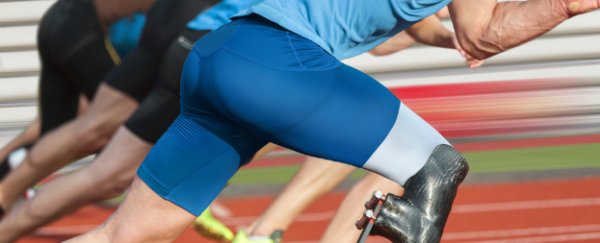Paralympians are already capable of doing incredible things - Scott Reardon, the fastest one-legged man in the world, can run 100 m in 12.14 seconds, just over 2 seconds slower than Usain Bolt.
Now UNSW Engineering PhD student Stacey Rigney is working on ways to make him, and other paralympians, even faster.
Although prosthetic limbs have been used in competition since the late '80s, most of the research on them has focussed on how to make them stronger and lighter. But there's still very little understanding of how they affect the gait of amputees, and also how they should be fitted for maximum performance.
"Rather than trying to design a new prosthesis, I'm trying to model its behaviour. We don't know a lot about how they behave. I'm trying to develop a mathematical behavioural model for the prosthesis when it deforms and returns the energy back," explains Rigney in a UNSW Engineering release.
In order to work out how the prosthetics alter gait, she's had to develop a new method of assessing the movement.
Traditional gait analysis involves passive reflective markers being placed on the shins, knee and ankle of a runner, and then being filmed and analysed to determine the torques and mechanics involved. But this relies on the person being monitored having a leg and foot, rather than a spring-like prosthetic.
Instead, Rigney is examining the elastic continuum mechanics using software to help calculate the force impacting on the prosthetic, as well as model the movement of the muscles.
"We can run simulations and say 'if we change the angle that it's connected to the limb to seven degrees instead of two degrees, will it make their gait more symmetrical? Will it make them faster?'" she says.
Rigney's now working with the Australian Institute of Sport and the Australian Paralympians, including Reardon, to hopefully find out exactly how we can use existing prosthetics to make amputees even faster than they already are. And perhaps one day as fast as those with two legs.
Find out more about the ways engineering is helping improve the world at UNSW Engineering.
Source: UNSW Engineering
